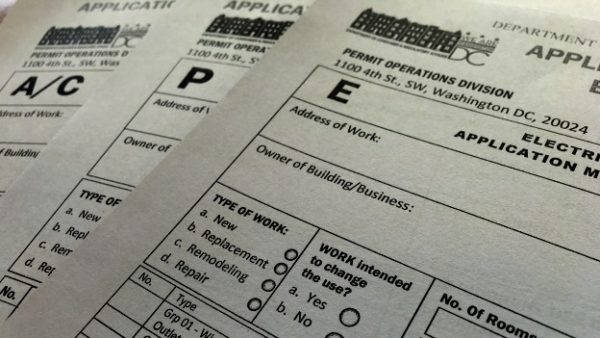The whole restaurant industry has transformed due to the novel COVID-19 pandemic that influences the worldwide economy, customer inclinations, customer’s

Introduction
HVAC systems play a very crucial role in ensuring the comfort of any residential or commercial building. So, if your home doesn’t have one, you should consider undertaking an improvement project. This may include; installing a new heat pump, boiler, furnace, or any other cooling & heating system.
Unfortunately, undertaking such a significant project without permits in California may be illegal. But, what’s a permit and why do you need one when installing or replacing the HVAC system? More importantly, how do you know if your HVAC design project requires a permit?
Well, those are some of the issues we’ll be looking at in this post. Also, we’ll look at the consequences that homeowners or contractors may encounter for skipping a permit.
First, here is what you need to know about permits in HVAC installation!
By definition, a construction permit refers to a written approval issued by a county or city to implement a project. Most remodeling or construction projects are supposed to have building permits. This helps to ensure that the project complies with the building and zoning codes set by the local government.
In MEP design, projects that need permits include; HVAC replacement, and HVAC installation. Also, permits may be needed when replacing the furnace, FAU, condenser, and coil. And when replacing/ adding more than 40 ft ductwork or relocating an existing HVAC system.
Note, municipalities, subdivisions, and cities tend to have different permit requirements. Nonetheless, a permit is required when installing an HVAC, regardless of the area you live in!
As we’ve already mentioned, HVAC permits are issued by local municipalities and states where needed. More notably, the permit has an implied authorization of the township, state, or city that’s obligated to ensure the projects meet the codes. It ensures that there’s uniform compliance in aspects like safety and construction practices.
Therefore, permit requirements, especially in HVAC design, are intended to protect the occupants. For instance, without these requirements, the building may be modified in a way that’s unsafe for tenants or inhabitants.
As a homeowner, the permit will also help you determine if your HVAC installer is licensed. Moreover, it ensures that the wiring, installation, location, and HVAC design system are safe! And if an accident occurs, you’ll have the proper documentation to present to your homeowner’s insurance.
Every township, city, and any other local government in California has its own process of issuing HVAC permits. Therefore, the permit fees and requirements will vary depending on where your business or home is located. Nonetheless, most cities in California require the following documents to issue a permit;
Generally speaking, a homeowner can obtain an HVAC permit. However, we do not recommend it since you’ll be held liable for the cause of any issues. Instead, have your HVAC contractor obtain the permit. This is because they’re familiar with the city’s inspectors and processes. Besides, the contractor will ensure that the permit is the right one for your home.
If your HVAC design project requires a permit, it’s good to obtain the permit. And if your HVAC contractor insists on skipping this step, consider hiring another contractor. Although this process may be cumbersome, it will save you from the consequences that may arise if you don’t have one.
To start, undertaking an MEP design project without a permit can lead to fines and penalties down the line. This will also happen if code enforcement officials discover that you’ve done the work without following the right process. Alternatively, the city may shut down the project or order you to tear down the work in question.
In addition, finishing an HVAC project without a permit may compromise your insurance rates and coverage. At the same time, the insurer may even cancel your homeowner’s insurance policy. On top of that, this may lower the resale value or scare potential buyers away. Even worse, if a disaster occurs due to unpermitted construction, the buyer can sue you.
At Innodez, we encourage homeowners to avoid undertaking HVAC projects without permits. This will ensure that your project is finished with utmost safety and care. More importantly, it will help you avoid all the consequences we’ve mentioned above.
Typically, all costs for pulling an HVAC permit are rolled into the contractor’s overall fees. That’s one of the many benefits of hiring a qualified/ licensed HVAC contactor like Innodez for your projects. That way, the responsibility of obtaining a permit will lie with your contractor.
However, this doesn’t mean that acquiring a permit doesn’t cost money. Besides, the local permitting authority has to ensure that the contractor is capable, licensed, and qualified. This ‘seal of authorization’ will certainly cost money. But, how much?
On average, acquiring an HVAC permit costs approximately $250 – $400 + the cost of a 3rd party duct audit. A 3rd party audit costs about $300 – $450. This, plus other additional costs that may be incurred when pulling the permit will range between $800 and $1500. However, this is an approximate figure, and chances are that it will vary from one township or city to another. Moreover, the cost is much higher in highly urbanized areas than in rural areas.
Final Word
To sum things up, there are 3 component expenses involved when installing a new HVAC system. They are; labor costs, HVAC unit cost as well as permitting costs. Adding these figures together will help you determine the total cost of your HVAC project.
That said, make sure you hire an insured, licensed, and qualified HVAC contractor for your project. InnoDez Design & Engineering is such a contractor. If you’re planning to install an HVAC system in California, contact us to learn more about obtaining HVAC permits!
About Author
InnoDez